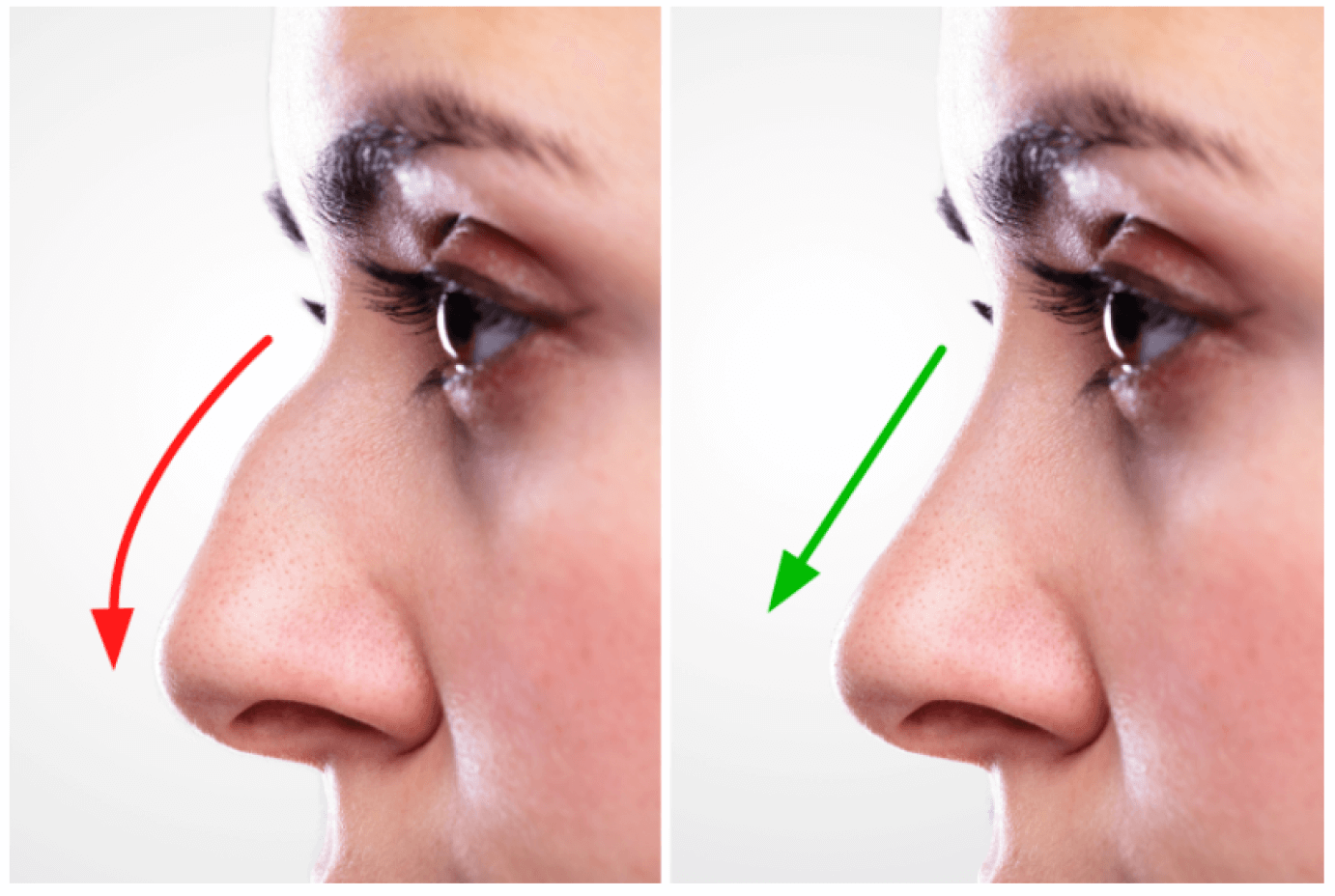The nose is a big part of the face and is among the first features people notice. While we are all naturally beautiful, the shape and size of your nose may not be what you consider perfect.
Whether it’s an issue you were born with or one you acquired due to physical trauma, you can correct it with a rhinoplasty procedure. This surgical procedure aims to change the size, functionality, and shape of the nose.
However, before deciding whether it’s a suitable option for you, here are some things you should know about it.

What Issues Does Rhinoplasty Address?
- A nose that is too big or small in relation to other facial structures.
- Bumps of the bridge.
- A droopy, enlarged, or bulbous tip.
- Crooked nose.
- Uneven, flared, or uneven nostrils.
- Long or short nose.
- Nasal asymmetry.
- Effects from current or past injuries.
- Birth defects.
If you are seeking nasal symmetry, you should know that the results may not be perfect because everyone’s face has a certain degree of asymmetry. If you are non-Caucasian, your ethnicity might have affected your nose’s thickness, structure, and skin quality. Ethnic rhinoplasty is a special type of rhinoplasty done by surgeons who understand your unique nasal structure.
While it fixes the same issues as a traditional rhinoplasty, it could cause lasting damage to the structure and functionality of your nose if done incorrectly.
How to Prepare For a Rhinoplasty
Before the rhinoplasty procedure, you should meet your surgeon to determine whether you are a good candidate. They ask about your medical history to know whether you have undergone nasal surgery in the past and whether you have any underlying health conditions that could make the surgery impossible or risky.
They then do a physical exam, including blood and laboratory tests. They also examine your facial, internal, and external nasal features. This helps them determine the issues, how they can fix them, and how the nasal structure will affect the results.
Someone from the office will also take pictures of your nose from several angles for before and after comparison. They also discuss your expectations and explain the possible results using the photos in relation to your facial features.
Do not take blood-thinning medicine for two weeks before your surgery, as that could increase bleeding. You should also avoid smoking and don’t eat on the day of the surgery.
What to Expect During the Procedure
The surgeon will administer local or general anesthesia depending on the complexity of your procedure. Depending on the extent of your issue, the surgeon might choose an open or closed rhinoplasty.
A closed rhinoplasty is for minor issues. The surgeon makes a cut in your nose, through which they reshape the nasal cavity. They take a shorter time, have a shorter recovery time, and leave fewer scars.
An open rhinoplasty, on the other hand, is for complex issues. The surgeon makes an incision at the base of your nose on the tissue strip between your nostrils, then flips the skin backwards. That allows them to access all nasal structures and makes it easy to remove any excess tissue. This technique takes longer, requires a longer recovery time, and might leave more scars.
If you want to increase the size of your nose, the surgeon can take cartilage from different places. They might take it from inside the nose or the ear for minor changes. However, they might take it from the ribs for more extensive changes or use implants.
After making the changes, the surgeon puts the skin back down and closes the incision with absorbable stitches. The procedure typically takes around two hours, but it depends on the complexity.

What to Expect After the Procedure
After the procedure, your surgeon might place a metal or plastic splint on your nose to help the nose retain its shape as it recovers. They might also add splints or packs inside the nose for septum stabilization.
They retain you in the hospital for observation for a few hours, then release you. If your procedure is complicated, you might remain in the hospital for at least two days. You should plan for a drive back home because of the anesthesia effects. Your nose might feel congested because of the swelling or splints and dressing inside.
You are expected to keep the splints for at least a week, and if your stitches are not absorbable, you should go and have them removed after a week.
A few days after your procedure, you might experience swelling, drainage, bleeding, bruising, redness on the nose and skin, headaches, and puffiness. You might also have swelling, numbness, and discoloration around your eyes, especially if you had an open procedure. This could last two to three weeks, but it could last for months in some rare cases.
While the procedure is relatively safe, healing is a long process. You might recover fully and have the bandages removed in a few weeks. However, some symptoms like numbness and swelling might continue for months, especially on the nose tip, which is the most sensitive part.
Sometimes, it might take around a year for you to notice and fully appreciate the results. Sometimes they are drastic but sometimes minor. That depends mainly on the technique and whether you had a first or revision surgery.
Primary rhinoplasty usually has more drastic results than revision rhinoplasty. Scarring after the procedure is minimal and hardly noticeable.
How to Take Care of Yourself After the Procedure
Your doctor will give you medication and instructions on preventing injuries and promoting faster recovery for the first few weeks after the surgery. Some of them include:
- Elevate your head above the chest while resting to reduce bleeding.
- Avoid strenuous activities and exercises like swimming, running, or heavy lifting.
- Avoid chewing gum, vigorous brushing, and intense facial expressions like smiling and laughing.
- Put on button-up clothes to avoid pulling them over your head.
- Don’t rest glasses on your nose.
- Don’t blow your nose.
- Avoid sun exposure to prevent permanent skin discoloration around the nose.
Conclusion
Before getting the surgery, ensure you find the best surgeon working in an accredited clinic or hospital. Ensure they have received the proper training, have a license, and are part of an association or board. You should also read reviews and look at their rating.


